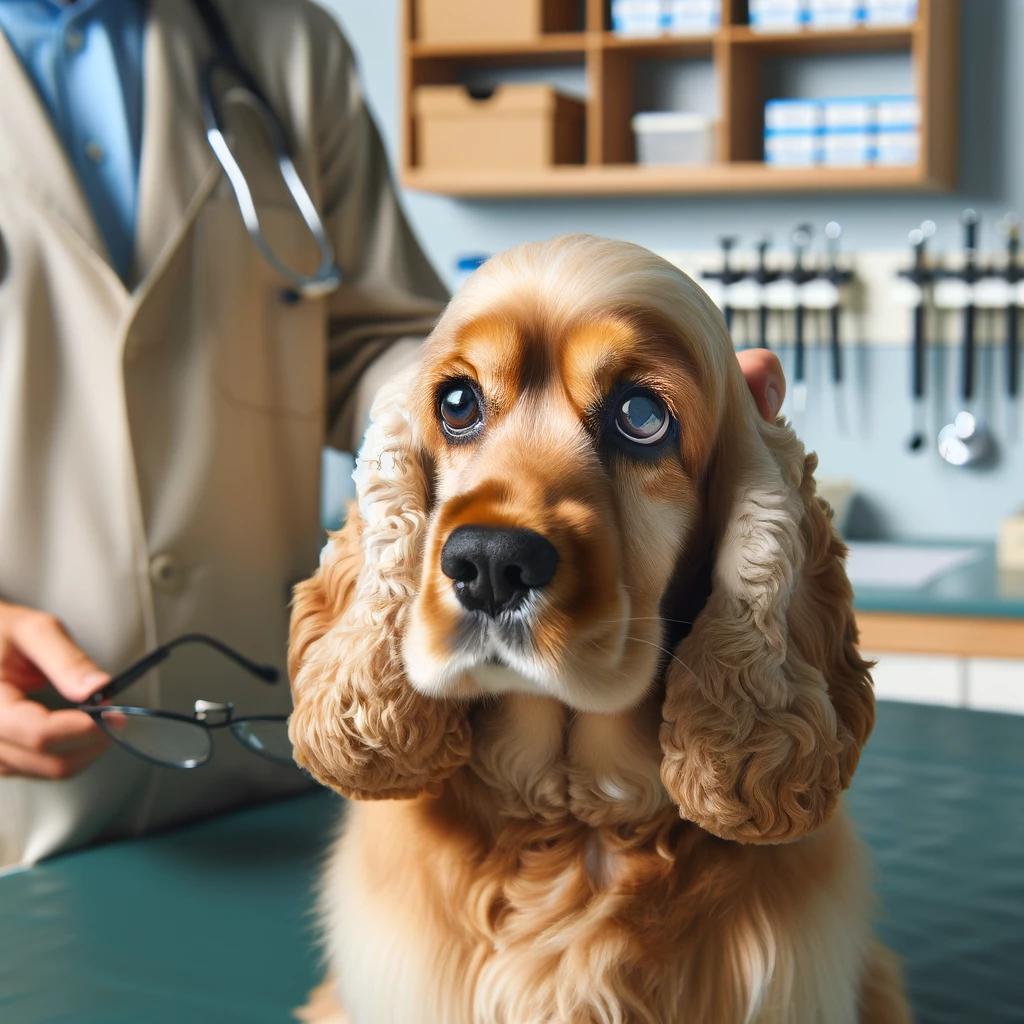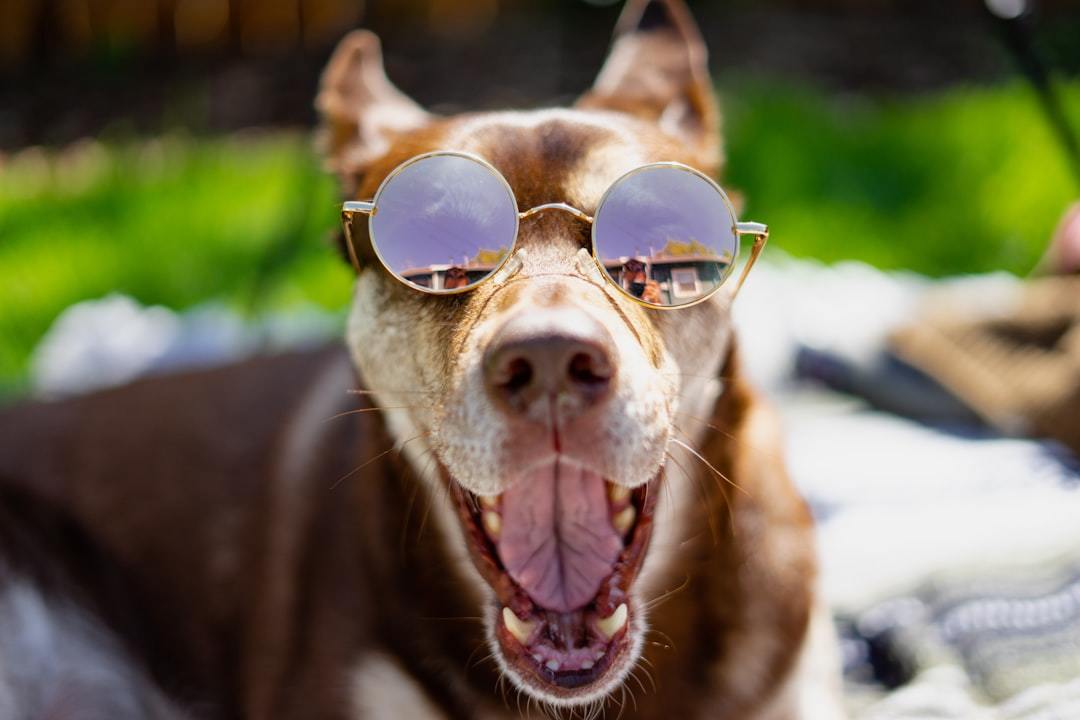Cataract Treatment in Dogs
Spotting a cloudy haze in your dog’s eyes can be more than just a sign of aging; it might indicate cataracts. Cataracts in dogs don’t just blur their world but can steal their sight entirely if left unchecked.
Embarking on exploration, we’ll unravel the mysteries behind what triggers these ocular obstacles, examining everything from inherited traits to the influences of surroundings and highlighting how catching them promptly can be a game-changer. Learn about the steps vets take to diagnose this issue and the treatments that can bring back your furry friend’s clear vision.
But we won’t stop there. You’ll also get practical tips on slowing down cataract progression or possibly preventing cataracts in dogs altogether with diet and lifestyle adjustments. Let’s embark on this journey together to ensure our dogs’ eyes stay as sharp as their senses.
Table Of Contents:
- Breeds with High Risk of Cataracts
- Understanding Cataracts in Dogs
- Recognizing the Signs of Cataracts in Dogs
- Common Causes Behind Cataracts in Dogs
- Diagnosing Cataracts in Canine Patients
- Treatment Options for Dogs with Cataracts
- Preventive Measures and Slowing Progression of Cataracts
- See Clearly
 AI illustration of a dog with cataracts
AI illustration of a dog with cataracts
Breeds with High Risk of Cataracts
When it comes to our furry companions, understanding their health risks is crucial for providing them with a happy and healthy life. Cataracts are a common concern among various conditions that can affect dogs, especially in certain breeds. Recognizing which dog breeds are at higher risk can help pet owners take preventive measures and seek timely treatment.
Dog Breeds at Higher Risk
- Siberian Huskies: Known for their stunning eyes, Siberian Huskies are unfortunately prone to hereditary cataracts.
- Poodles: Both Miniature and Standard Poodles have a predisposition towards developing cataracts early in life.
- Cocker Spaniels: This breed often suffers from congenital cataract conditions that may appear from birth or within the first few years of life.
- Boston Terriers: Boston Terriers frequently encounter juvenile-onset cataracts, which could progress rapidly if not addressed promptly.
- Australian Shepherds: They carry genes that increase their likelihood of developing minor opacities and significant vision-obstructing cataract formations.
If you own one of these breeds or are considering adopting one, regular veterinary check-ups, including eye examinations, should be part of your routine care plan. Early detection plays a key role in managing this condition effectively. Learn more about caring for your dog’s eyes here.
If you have questions about cataracts in dogs, you can sign up for an online vet consultation with Ask A Veterinarian. They are available 24/7 to answer questions.
To avoid unexpected health costs, check out Pet Assure Mint. No exclusions for pre-existing conditions.
Treatment Options Available
The primary treatment for advanced cases is surgical removal by an experienced veterinary ophthalmologist. However, early stages might be managed through medication or dietary adjustments to slow progression. Always consult your veterinarian regarding the best course of action tailored specifically to your pet’s needs. Discover more on canine treatment options here.
Understanding Cataracts in Dogs
Cataracts in dogs are like a frosted glass window that obstructs their view. The lens of your dog’s eye gets foggy, making it hard for them to see, and without help, they could lose their sight completely.
The basic mechanism behind cataract development is similar to what happens in humans – proteins within the lens start clumping together, causing light to scatter as it passes through, blurring vision. Factors ranging from age, genetics, diabetes, or even injuries can kickstart this process.
Dogs with cataracts might not show pain, but you’ll notice them bumping into furniture or hesitating to jump or climb stairs. We must catch these signs early on for our furry friends’ well-being. Delve into the subject further to grasp the effects of cataracts on canine sight and explore avenues for assistance by consulting more detailed materials.
Recognizing the Signs of Cataracts in Dogs
Detecting cataracts early can make a huge difference for your furry friend. But how do you spot them? First off, watch for changes in their eyes. A classic sign is when their normally clear lens looks cloudy or bluish-gray.
This cloudiness can start small but might grow over time, covering more of the eye’s lens and affecting their vision. Another tell-tale sign is if your dog starts bumping into furniture or seems hesitant to jump or climb stairs, they’re not just being clumsy—they might not see well.
Upon observing these indicators, scheduling a consultation with the veterinarian becomes imperative. They can confirm whether it’s cataracts and discuss what comes next. Remember, catching this condition early could help preserve your dog’s sight longer.
Common Causes Behind Cataracts in Dogs
Diving straight into the heart of cataract causes, genetics play a major role. Certain breeds are more prone to developing this eye condition than others. Think about it like inheriting your grandmother’s knack for baking or your dad’s dislike for broccoli; some things just run in the family.
But it’s not all about what Mom and Dad passed down. Environmental factors also have their say. Exposure to intense sunlight can be a culprit, while nutritional deficiencies pack their own punch when it comes to affecting your dog’s eyesight.
Last but definitely not least, age cannot hide from the spotlight. Just as our hair turns gray, dogs’ eyes tend to develop issues as they age, with cataracts being one of the common aging signs.
Diagnosing Cataracts in Canine Patients
Veterinarians have a toolkit of methods to spot cataracts in our furry friends. First up, they’ll give your dog’s eyes a thorough exam using something called a slit lamp biomicroscope. This high-tech tool lets them zoom in on the lens and check for any cloudiness or abnormalities that scream ‘cataract’. But wait, there’s more.
If the vet suspects cataracts are starting their sneak attack, they might suggest an ultrasound. It helps see past those pesky cloudy lenses to rule out other eye villains like retinal detachment. Plus, it’s crucial before considering surgery to ensure everything else in the eye is A-OK.
Last but not least, genetic testing can play a detective for certain breeds prone to hereditary cataracts. Knowing if your pooch carries these genes can be super helpful for early intervention and management strategies.
Treatment Options for Dogs with Cataracts
Cataracts might be the culprit when your furry friend bumps into furniture or misses the catch during playtime. The good news is that options are on the table to help clear things up.
Surgical Intervention: The Clear Choice
The gold standard for treating cataracts in dogs is surgery, specifically phacoemulsification. This process involves removing the cloudy lens and replacing it with an artificial one. Opting for this procedure is akin to gifting your furry friend a sparkling pair of peepers, revitalizing their vision. Most dogs come out seeing better than they have in years. Delving into this topic further, the American Kennel Club offers an extensive exploration for those interested.
But surgery isn’t a fit for every pup or pocketbook. That’s where non-surgical methods step in.
Laser Therapy & Medications: Supporting Roles
In some cases, laser treatment offers a pathway to mitigate the side effects of cataracts, striving to preserve both comfort and clarity of sight to the fullest extent. And while no drops can dissolve cataracts just yet, certain medications help manage symptoms and prevent worsening conditions related to eye pressure.
Preventive Measures and Slowing Progression of Cataracts
Eating right significantly influences the well-being of your eyes. Feeding your dog antioxidants like Vitamins C and E can combat the oxidative stress contributing to cataract formation. Foods rich in these vitamins or supplements specifically designed for canine-eye health are a good start.
Next, shield those peepers from UV rays because dogs, like humans, can suffer sun-induced eye damage. A pair of doggy sunglasses for those bright days could be more than just a fashion statement; it’s a layer of protection against potential harm.
Last but not least, regular check-ups with your vet cannot be overstated. Early detection is key to managing or reversing cataract progression, making routine visits essential for catching issues before they escalate.
See Clearly
So, we’ve journeyed through the foggy world of cataracts in dogs. You now know these aren’t just minor hiccups but serious business.
Remember that catching these issues at the outset can drastically alter the outcome. Spotting those signs early means you’re one step ahead in preserving your pup’s vision.
We talked about causes, from genes to the environment. This knowledge equips you with the power to prevent or slow down this condition.
Treatment options are many, but choosing the right path depends on understanding what you’re dealing with. Surgery might be an option, but so are less invasive methods.
Finally, never underestimate diet and regular vet visits. They do more than fill bellies and check boxes; they keep those eyes clear and sharp.
Let’s ensure our furry friends see the world as brightly as possible for as long as possible. Because when it comes to cataracts in dogs, being informed is being prepared.

